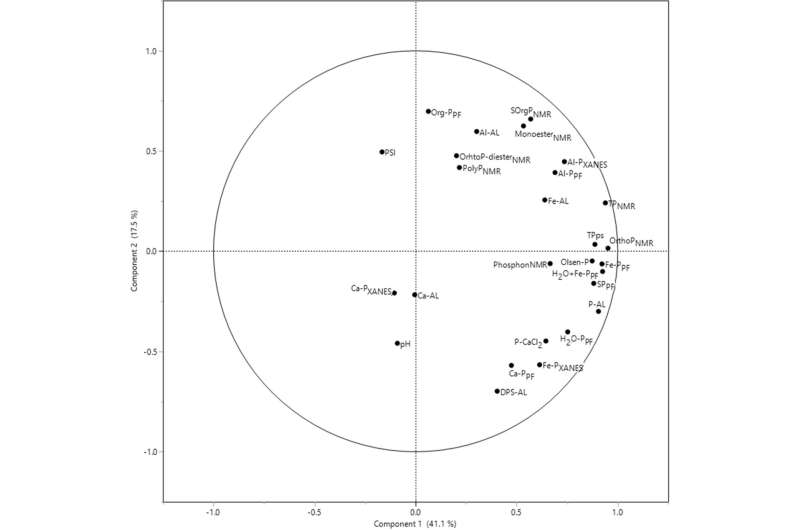This article has been reviewed according to Science X's editorial process and policies. Editors have highlighted the following attributes while ensuring the content's credibility:
fact-checked
trusted source
proofread
Understanding sensitive soils to improve quality of surrounding water

Researchers from the Swedish University of Agricultural Sciences in Uppsala are investigating the impact of phosphorous—both that which exists naturally in soil and that which has been added as manure or fertilizer—on sensitive soils and local aquatic systems.
Phosphorus is an essential nutrient for crops and a component of many fertilizers, including animal manure. While it's critical for plant growth, too much can damage the quality of water bodies near farms. Phosphorus runoff increases the nutrients within aquatic systems that feed algal blooms, which can lead to a decrease in oxygenated water and a reduction of biological diversity in lakes. Algal blooms can impact human health and wildlife as well as the economies of affected communities reliant on fishing and tourism.
"The transfer of phosphorus from land to aquatic recipients is not equally distributed, meaning some parts of the landscape are more vulnerable," says Faruk Djodjic, Associate Professor at the Department of Aquatic Sciences and Assessment. "By identifying those vulnerable soil profiles and targeting them with mitigation measures, we can improve water and soil quality."
With the help of the Canadian Light Source (CLS) at the University of Saskatchewan (USask), Djodjic and his colleagues were able to analyze samples to better understand the composition of sensitive soils.
The beamline data from SXRMB helped the researchers identify important compounds that govern phosphorus absorption or release.
"We found that aluminum compounds are important in keeping phosphorus in the soil," says Djodjic.
"Working with the CLS was a very positive experience," says Djodjic. "Synchrotron technology gives us additional information that allows us to compare other methods to further interpret our results."
This new study could lead to better agricultural practices, ensuring that special attention is given to phosphorus use, especially on sensitive soils.
"We can help inform farmers on how to cope with problems with sensitive soils and help prevent phosphorus from leaving these soils and entering into waterways," says Djodjic.
More information: Faruk Djodjic et al, Soils potentially vulnerable to phosphorus losses: speciation of inorganic and organic phosphorus and estimation of leaching losses, Nutrient Cycling in Agroecosystems (2023). DOI: 10.1007/s10705-023-10298-6
Provided by Canadian Light Source


















